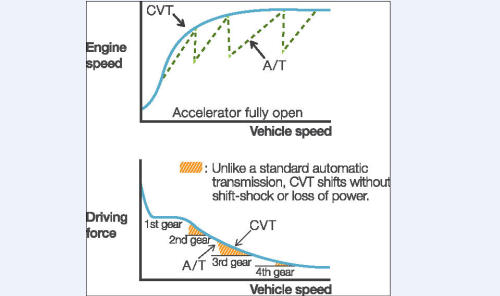Some companies ask candidates to describe their strengths and weaknesses during a job interview, while others like global consulting firm Bain & Company, ask applicants to figure out how many ping pong balls can fit into the overhead compartment of a 747 plane.
In recent years, tech companies like Google have developed a reputation for conducting tough interviews, but according to a recent survey by
Glassdoor.com, a job search engine, it's really consulting groups like Bain & Company that ask candidates the most difficult questions.
Glassdoor analyzed employee reviews for dozens of companies on its site to pinpoint the organizations with the most daunting interviews and found consulting firms dominated the very top of the list, while Google ranked down at No. 21, just behind fellow tech giants eBay and Amazon.
So what is it that makes interviewing at a consulting company so difficult?
"With consulting companies, the questions aren't just about your resume. It's also situational problems that job candidates have to reason through to find a solution," said Samantha Zupan, a spokesperson for Glassdoor. "And we all know it's really stressful to have to go deep into those questions and try to shine while coming up with an answer."
Just because these companies have tough interviews doesn't make them bad places to work. In fact, just the opposite seems to be true. Glassdoor's reviews found that employees were generally satisfied with most of the companies on this list, despite the difficult interview process. As Zupan points out, these tough interview questions arguably help companies find the most suitable workers, and help workers determine if the company is right for them so that both are more satisfied in the long run.
Here are the 10 companies with the hardest interview questions, ranked on a scale of one to five, with five being the hardest, along with some sample questions from each company, as provided to Glassdoor by their employees. Start preparing for the interview now.

©kenhodge13/flickr |
BP
BP may be infamous for other reasons, but it turns out the oil company is also notorious for its job interviews.
Interview Difficulty Rating: 3.5
"How many volts does it take to power an offshore rig?" -- For an engineering internship.
"If you had to change a tire how would you do it?" -- For a mechanical engineering position.
Red Ventures
This South Carolina-based
marketing group boasts that it has been called the next Google, but in reality, the company has surpassed Google, at least in terms of the interview process. However, unlike some of the other companies on this list, its questions often veer toward the eccentric rather than problem solving.
Interview Difficulty Rating: 3.5
"If you were an animal, what animal would you be?" -- For a regional account representative.
"Tell me a joke." -- For a sales agent.
A.T. Kearney
A.T. Kearney is the first of several consulting firms to make the list, and focuses mainly on working with companies to be more socially responsible, perhaps most notably by improving their environmental sustainability.
Interview Difficulty Rating: 3.5
"What companies in the Polish energy sector do you know?" -- For a business analyst position.
"How big is the market size for wheelchairs in Shanghai?" -- For a business analyst position.
Teach for America
Teach for America is known for being one of the most challenging -- though rewarding -- experiences a young adult can undertake, training recent college graduates to teach in low-income public schools around the country. Given the stress that comes with the job, it should come as little surprise that the organization would have a particularly difficult interview process to weed out applicants.
Interview Difficulty Rating: 3.5
"You want to take the third graders on a field trip to the zoo, but there is no extra funding to do so. You must ask the principal to reconsider and allow your students to go on the field trip. Explain how you would persuade the principal." -- For a teaching position.
"Can you think of anything that might make you leave TFA earlier than your two-year commitment?" -- For a teaching position.
Palantir Technologies
One of the few technology companies to rank near the top of the list, Palantir specializes in putting out software to help governments and financial organizations analyze data.
Interview Difficulty Rating: 3.5
"You have a 10x10x10 rubix cube. You paint the outside. How many cubes have paint on them?" -- For an embedded analyst position.
"You are outside a room. Inside the room there are two light bulbs. One light bulb is on all the time, the other light bulb only turns on when you open the door. How do you determine which light bulb is on all the time?" -- For an engineering position.
Boston Consulting
This Boston-based consulting group often ranks as one of the best companies to work for, and indeed, Glassdoor's data show high levels of employee satisfaction here, with the average worker giving the company a four rating overall. Still, the interview questions range from quirky to brain busters and will likely make candidates sweat in their seats.
Interview Difficulty Rating: 3.6
"Estimate the market size of IVF treatment in Sweden." -- For a management consulting position.
"Why do you like singing?" -- For a consulting associate.

©Bain.com |
Bain & Company
As we mentioned in the beginning, this is one consulting group that really knows how to ask a hard question.
Interview Difficulty Rating: 3.6
"Help me estimate how many car dealerships there are in the United States." -- For a consultant position.
"What is the revenue of an inner city Sydney gym?" -- For an associate consultant position.
Cree
Cree produces LED light fixtures and bulbs and is the only other tech company to rank high on Glassdoor's list. Its questions are particularly fascinating.
Interview Difficulty Rating: 3.7
"How is the pothole formed?" -- For a science position.
"How many barbers would you need in a city of 1 million?" -- For a process engineer.
Jane Street Capital
It's not just consulting groups and tech companies that pose difficult questions. Jane Street Capital, a trading firm with offices in New York, London and Hong Kong, knows how to grill job candidates better than most. Its questions of choice focus on math skills.
Interview Difficulty Rating: 3.7
"What's 26 times 27?" -- For a capital trader position.
"What is the expected number of flips of a coin to simulate a six-sided die?" -- For a capital assistant trader position.
McKinsey & Company
Of all the major companies, none poses a more challenging interview than McKinsey & Company, a global consulting group that helps big businesses manage customers, developer marketing strategies and handle mergers and acquisitions. Since employees at this company play such a crucial role advising other businesses, it stands to reason that they need to be highly qualified, hence the tough questions.
Interview Difficulty Rating: 3.9
"A Canadian beer manufacturer notices that when they increase the price of beer, other drinks' consumption goes up. How will you predict the change in quantity bought based on change in price?" -- For an analytics specialist.
"A mom-and-pop music shop wants to grow with stiff competition. How should they go about it? Calculate customer lifetime value." -- For a marketing professional.













